In the realm of culinary adventures, few dilemmas elicit as much creativity and innovation as the quest for the perfect pie pan substitute.
Whether you’re a seasoned baker facing a sudden shortage in your kitchen arsenal or an intrepid culinary explorer seeking unconventional solutions, the world of pie-making offers a canvas ripe for experimentation.
Picture this: a medley of flavors, a symphony of textures, all nestled snugly within a vessel that defies convention. From rustic cast iron skillets to elegant tart pans, and even the humble muffin tin, the possibilities are as endless as they are tantalizing.
So, roll up your sleeves, sharpen your knives, and prepare to embark on a tantalizing journey through the realm of pie pan substitutes, where ingenuity meets delectable delight at every turn.

Pie Pan Substitute
When it comes to baking pies, having the right pan is crucial for achieving that perfect crust and ensuring even baking. However, sometimes you might find yourself in a situation where you don’t have a traditional pie pan on hand. Fear not! There are several creative alternatives you can use as substitutes:
Cake Pan
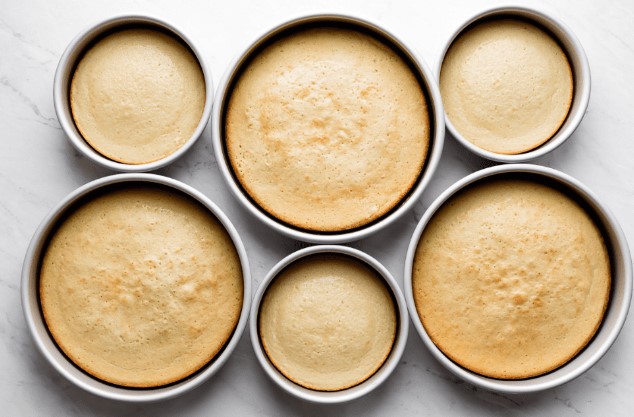
A cake pan, though traditionally used for baking cakes, can serve as a versatile substitute for a pie pan in a pinch. Its flat bottom and straight sides provide a stable base for pie crusts, ensuring even baking and a crisp finish.
While the shape may differ slightly from a pie pan, cake pans come in various sizes and depths, making them adaptable to different pie recipes. Whether you’re making a classic fruit pie or a savory quiche, a cake pan can step in to help you create delicious homemade pies with ease.
Tart Pans
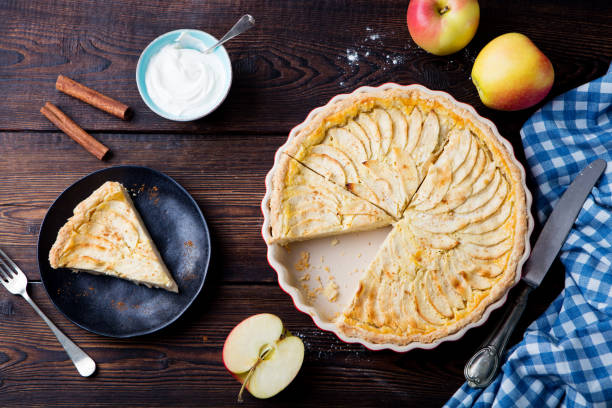
Tart pans, known for their fluted edges and removable bottoms, offer a charming alternative to traditional pie pans. These pans excel in creating elegant, decorative crusts for tarts but can also serve admirably for pies.
Their removable bottoms simplify the process of releasing delicate crusts and fillings, ensuring a flawless presentation. While the shape may differ slightly, tart pans provide a unique touch to your pie creations and can elevate the visual appeal of your baked goods.
With their versatility and aesthetic charm, tart pans are a delightful choice for crafting both sweet and savory pies with flair.
Muffin Pans
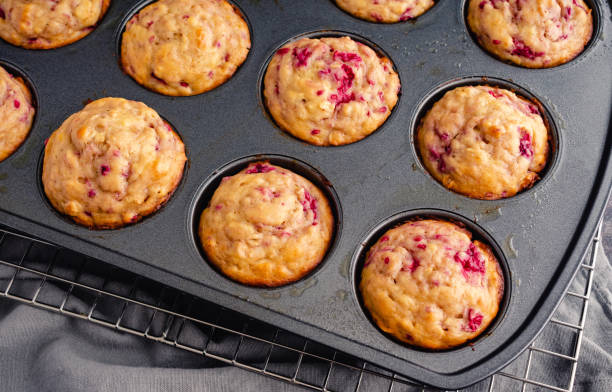
Muffin pans, typically used for baking muffins and cupcakes, can be repurposed as a creative substitute for pie pans, particularly for crafting individual-sized or mini pies.
Their divided compartments provide perfect portions for single servings, making them ideal for parties or gatherings. By lining each cup with pie crust and filling them with your favorite pie filling, you can create adorable mini pies that are both delicious and visually appealing.
Muffin pans offer versatility and convenience, allowing you to experiment with different fillings and crust designs to customize each mini pie to your liking. With muffin pans, you can easily transform your pie-making experience into a fun and versatile baking adventure.
Baking Paper
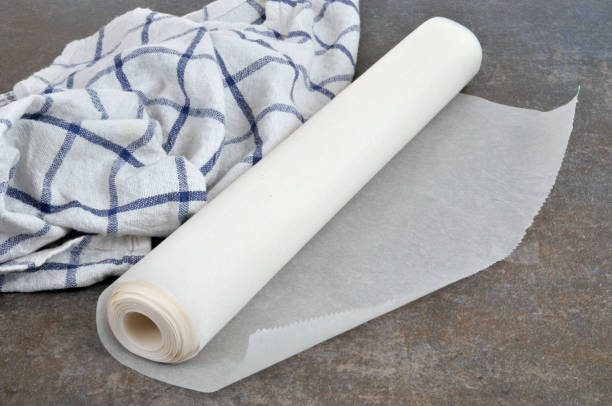
Baking paper, while not a traditional pan substitute, can be ingeniously used to bake pies without a dedicated pan. By shaping the pie crust directly onto a piece of baking paper, you create a makeshift container for your filling.
This method is particularly useful for free-form pies like galettes or rustic tarts, where the edges of the crust are folded up around the filling. Once assembled, the pie can be placed directly onto a baking sheet and baked to perfection.
The baking paper not only prevents sticking but also helps maintain the shape of the pie during baking. This makeshift solution offers flexibility and convenience, allowing you to enjoy homemade pies with minimal equipment.
Disposable Aluminum Pans
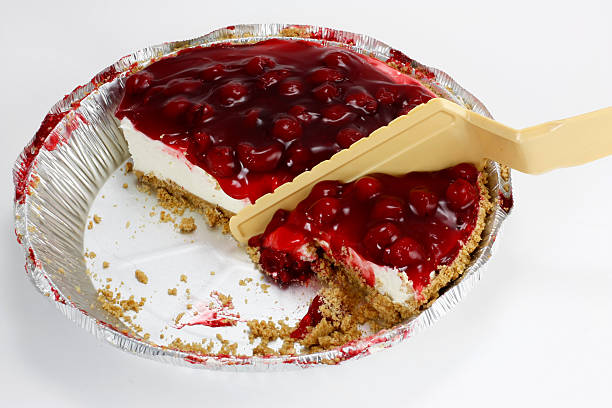
Disposable aluminum pans offer a convenient and practical substitute for traditional pie pans, especially in situations where convenience is paramount. These pans come in various shapes and sizes, making them adaptable to different pie recipes.
While not as durable or aesthetically pleasing as reusable pans, disposable aluminum pans are convenient for occasions like potlucks, picnics, or large gatherings where cleanup is a concern.
They provide a reliable baking surface, ensuring even heat distribution for a well-baked crust. Moreover, their lightweight and disposable nature make them ideal for transporting pies without the worry of returning a pan.
With disposable aluminum pans, you can enjoy homemade pies with ease and simplicity, making them a handy solution for impromptu baking sessions or busy lifestyles.
Things To Consider When Choosing A Pie Pan Substitute
When selecting a substitute for a traditional pie pan, several factors should be considered to ensure successful pie baking:
Size and Depth
When choosing a substitute for a traditional pie pan, it’s crucial to consider both the size and depth of the pan. Opting for a substitute that closely matches the dimensions of the original pie pan ensures that the pie bakes evenly and that the filling-to-crust ratio remains balanced.
Moreover, the depth of the pan affects the amount of filling that can be accommodated and can impact baking times. A deeper pan may require longer baking to ensure that the filling is cooked through without burning the crust.
Therefore, selecting a substitute pan with the appropriate size and depth is essential for achieving optimal results when baking pies.
Material
The material of the substitute pan is a critical consideration when choosing a pie pan alternative. Different materials conduct heat differently, which can affect the baking process and the final outcome of the pie.
For instance, metal pans, such as aluminum or steel, tend to conduct heat quickly and evenly, resulting in a crispier crust. Glass or ceramic pans, on the other hand, distribute heat more slowly and evenly, which can lead to a softer, more tender crust.
Moreover, some materials, like cast iron, retain heat exceptionally well, making them ideal for deep-dish pies or pies with longer baking times. Consider the specific requirements of your pie recipe and personal preferences when selecting a substitute pan material to ensure the best possible baking results.
Shape
The shape of the substitute pan plays a significant role in both the presentation and baking of the pie. While traditional pie pans are typically round with sloped edges, alternative shapes such as square, rectangular, or even novelty shapes like hearts or stars can be used for creative pie presentations.
However, it’s essential to consider how the shape might affect baking times and crust development. For instance, pies baked in rectangular pans may have slightly different baking times due to the variation in surface area compared to round pans.
Moreover, certain shapes, such as those with intricate designs or sharp corners, may require adjustments to ensure the pie bakes evenly and releases smoothly from the pan.
Ultimately, choose a substitute pan shape that complements the desired presentation of the pie while considering any potential baking adjustments that may be necessary.
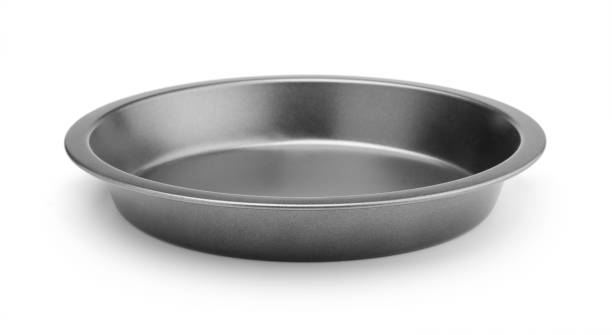
Ease Of Cleaning
When considering a substitute for a traditional pie pan, it’s important to factor in the ease of cleaning. Some materials, like non-stick coated pans or disposable aluminum pans, are inherently easier to clean because food is less likely to stick to their surfaces.
However, be mindful of using abrasive scrubbers or harsh chemicals on non-stick coatings, as they can damage the surface over time. Glass and ceramic pans are also relatively easy to clean, although they may require a bit more effort to remove stubborn food residue.
Moreover, consider whether the substitute pan has any removable parts, such as a bottom or sides, which can make cleaning more convenient.
Ultimately, choosing a substitute pan that is easy to clean will help streamline the post-baking process and ensure that you can enjoy your delicious pie with minimal cleanup hassle.
Heat Distribution
Heat distribution is a crucial factor to consider when selecting a substitute for a traditional pie pan. Different materials conduct heat at varying rates, which can impact how evenly the pie bakes.
For instance, metal pans, such as aluminum or steel, tend to conduct heat quickly and evenly, resulting in a uniformly baked pie with a crisp crust. On the other hand, glass or ceramic pans distribute heat more slowly and evenly, which can lead to a softer, more tender crust.
Cast iron pans excel in retaining and evenly distributing heat, making them ideal for deep-dish pies or pies with longer baking times. It’s essential to choose a substitute pan that provides consistent heat distribution to ensure that the pie bakes evenly and thoroughly throughout.
Weight
The weight of the substitute pan is an important consideration, particularly if you plan to transport the pie or if you have mobility issues.
Lighter pans, such as aluminum or disposable options, are easier to handle and transport, making them convenient choices for picnics, potlucks, or gatherings. However, lightweight pans may not provide as even heat distribution as heavier options.
Heavier pans, such as cast iron or thick ceramic, offer superior heat retention and distribution but may be cumbersome to carry. Consider your specific needs and preferences when selecting a substitute pan based on weight, balancing ease of handling with baking performance.
Availability and Cost
Availability and cost are practical considerations when selecting a substitute for a traditional pie pan. Basic options like disposable aluminum pans or cake pans are generally widely available and affordable, making them convenient choices for occasional bakers or those on a budget.
Specialty pans, such as tart pans or cast iron skillets, may offer superior baking performance but can be more expensive and harder to find.
Moreover, consider the long-term cost implications, as investing in a durable, high-quality substitute pan may ultimately save money over time compared to frequently purchasing disposable options.
Factor in your budget and baking frequency when choosing a substitute pan to ensure that it meets your needs without breaking the bank.
Removability
The removability of the substitute pan is an important factor to consider, especially when it comes to releasing the pie after baking.
Pans with removable bottoms or sides, such as tart pans or springform pans, offer convenience in releasing delicate crusts or fillings without damaging the pie. This feature simplifies serving and ensures that the pie maintains its shape and presentation.
However, not all substitute pans have removable parts, and some pies may release easily from non-removable pans with proper preparation.
Consider your preferences and the specific requirements of your pie recipe when choosing a substitute pan with regards to removability, prioritizing ease of use and presentation.
How To Use A Pie Pan Substitute
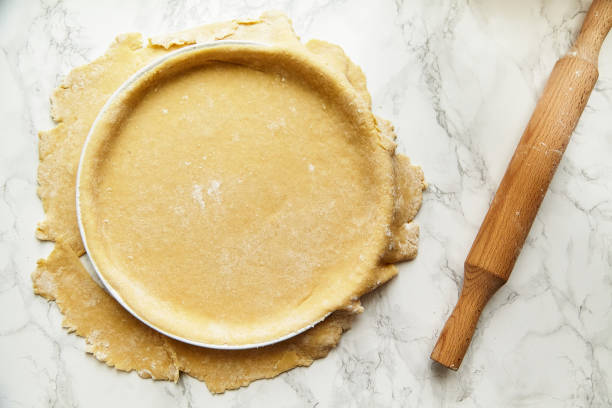
Using a pie pan substitute involves adapting your baking process to accommodate the specific features and limitations of the substitute pan. Here’s a general guide on how to use a pie pan substitute effectively:
Selecting the Substitute
When selecting a substitute for a traditional pie pan, consider several factors to ensure optimal baking results. Firstly, choose a substitute pan that closely matches the size and shape of the original pie pan called for in your recipe.
This ensures that the pie bakes evenly and that the filling-to-crust ratio remains balanced. Moreover, consider the material of the substitute pan, such as metal, glass, ceramic, or disposable aluminum, and how it may affect heat distribution and baking times.
Take into account any specific features you may need, such as non-stick coatings or removable parts, based on your recipe and personal preferences. Finally, consider factors like availability, cost, and durability to select a substitute pan that fits your budget and baking needs.
Preparation
Once you’ve selected the substitute pie pan, it’s essential to prepare it properly before using it for baking. Here’s a step-by-step guide on how to prepare your substitute pan:
- Cleaning: Start by cleaning the substitute pan thoroughly with warm, soapy water to remove any dust, debris, or manufacturing residues. Dry it completely with a clean towel or allow it to air dry before proceeding.
- Greasing or Lining: Depending on the material and non-stick properties of the pan, you may need to grease it lightly with butter, oil, or non-stick cooking spray to prevent the pie crust from sticking. Alternatively, you can line the bottom of the pan with parchment paper or aluminum foil for easier pie removal and cleanup.
- Flouring (if needed): If you’re using a substitute pan with a tendency to stick, such as a metal or non-coated pan, consider flouring it lightly after greasing. Sprinkle a thin layer of flour over the greased surface and shake off any excess to create a barrier between the crust and the pan.
- Preheating the Oven: Preheat your oven to the temperature specified in your pie recipe to ensure that it’s hot and ready when you’re ready to bake your pie.
By taking the time to properly prepare your substitute pie pan, you can help ensure that your pie bakes evenly and releases smoothly from the pan, resulting in a delicious and visually appealing final product.
Crust Preparation
When using a substitute pie pan, proper crust preparation is key to achieving a delicious and well-baked pie. Begin by preparing your pie crust according to your chosen recipe or using a pre-made crust if preferred.
Roll out the dough to fit the size and shape of your substitute pan, ensuring it extends slightly beyond the edges to accommodate any shrinkage during baking. Carefully transfer the crust to the prepared pan, gently pressing it into the bottom and up the sides.
Trim any excess dough and crimp or flute the edges as desired for a decorative finish. If using a double crust pie, such as for fruit pies, add the filling to the prepared crust before covering it with the top crust and sealing the edges.
For single crust pies, such as custard or cream pies, simply fill the crust with the desired filling before baking. By properly preparing your pie crust, you set the foundation for a delicious homemade pie that’s sure to impress.
Filling
Once your substitute pie pan is prepared and the crust is ready, it’s time to fill it with your desired filling. Whether you’re making a classic apple pie, a savory quiche, or a decadent chocolate cream pie, the filling is what gives your pie its flavor and character.
Follow your chosen recipe to prepare the filling ingredients, whether it’s slicing apples and tossing them with sugar and spices, whisking together eggs and cream for a quiche, or melting chocolate and whipping cream for a decadent filling.
Once the filling is ready, carefully pour it into the prepared pie crust, ensuring it’s evenly distributed. Be mindful not to overfill the pie, as this can cause it to spill over during baking.
With the filling in place, your pie is now ready to be baked to perfection in your substitute pie pan.
Baking
After preparing the crust and filling, it’s time to bake your pie in the substitute pan. Preheat your oven to the temperature specified in your recipe, ensuring it’s hot and ready for baking.
Place the filled pie in the center of the oven and set the timer according to the recommended baking time in your recipe. Keep an eye on the pie as it bakes, rotating it halfway through if necessary to ensure even cooking.
Depending on the type of pie and your chosen filling, the baking time may vary, so use visual cues such as golden-brown crust or bubbling filling to determine when it’s done.
Once baked to perfection, carefully remove the pie from the oven using oven mitts or pot holders, and place it on a heatproof surface to cool before serving. With proper baking in your substitute pie pan, you’ll enjoy a delicious homemade pie that’s sure to impress your family and friends.
Testing for Doneness
Testing for doneness is a crucial step in ensuring that your pie is perfectly baked. There are several methods you can use to check if your pie is done:
- Visual Inspection: Look for visual cues that indicate the pie is ready. The crust should be golden brown, and the filling should be bubbling and set. If the crust appears pale or undercooked, or if the filling is still liquidy, the pie may need more time in the oven.
- Insert a Toothpick or Knife: Insert a toothpick or sharp knife into the center of the pie and then remove it. If the toothpick or knife comes out clean, without any wet batter clinging to it, the pie is likely done. However, for custard or cream pies, a few moist crumbs on the toothpick may be acceptable.
- Check the Internal Temperature: Some pies, such as custard or cream pies, may require checking the internal temperature to ensure they’re fully cooked. Use a food thermometer to measure the temperature in the center of the pie. The temperature should reach a safe minimum internal temperature according to your recipe guidelines.
- Tap Test: Gently tap the top of the pie with your finger. If it feels firm and springs back slightly, it’s likely done. If it feels soft and jiggles, it may need more time in the oven.
By using one or a combination of these methods, you can ensure that your pie is thoroughly baked and ready to be enjoyed. Remember that the exact timing and testing method may vary depending on the type of pie and your specific recipe, so always refer to your recipe instructions for guidance.
Cooling and Serving
Once your pie is baked to perfection and tested for doneness, it’s time to let it cool before serving. Allow the pie to cool in the substitute pan on a wire rack for at least 20 to 30 minutes.
This allows the filling to set and the crust to firm up, making it easier to slice and serve. Be patient during this time, as cutting into a hot pie can cause the filling to run and the crust to crumble.
After the cooling period, you can carefully remove the pie from the substitute pan if desired. For pans with removable bottoms or sides, follow the manufacturer’s instructions to release the pie gently. If using a disposable pan or a non-removable pan, you can serve the pie directly from the pan or transfer it to a serving plate if preferred.
Once the pie has cooled and been removed from the pan, slice it into portions using a sharp knife and serve with your favorite accompaniments, such as whipped cream, ice cream, or a drizzle of sauce. Enjoy your homemade pie with friends and family, savoring each delicious bite!
Remember to store any leftover pie properly in the refrigerator to maintain its freshness and flavor. With proper cooling and serving techniques, your pie will be a delightful dessert that everyone will love.
How To Care For Your Pie Pan Substitutes
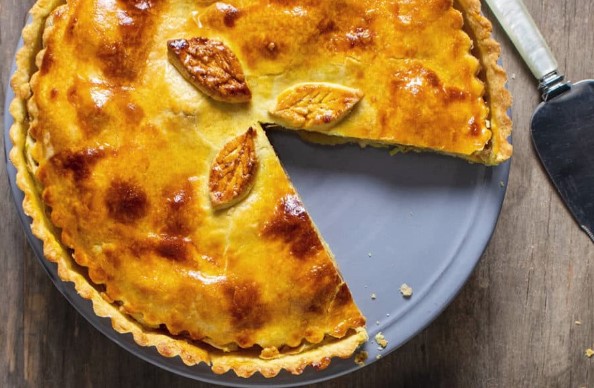
Caring for your pie pan substitutes ensures their longevity and optimal performance. Here are some tips on how to care for different types of pie pan substitutes:
Metal Pans (such as aluminum or steel)
- After each use, wash the pan with warm, soapy water and a non-abrasive sponge or cloth.
- Avoid using abrasive cleaners or scouring pads, as they can scratch the surface of the pan.
- Dry the pan thoroughly with a towel to prevent water spots or rust from forming.
- To prevent sticking, lightly grease the pan with cooking spray or oil before each use, especially if it’s not non-stick.
Glass or Ceramic Pans
- Handle glass or ceramic pans with care to prevent chipping or breakage.
- Wash the pan by hand with warm, soapy water, as dishwasher detergents can dull the finish over time.
- Avoid drastic temperature changes, such as placing a hot pan directly on a cold surface, as this can cause cracking.
- Allow the pan to cool completely before washing to avoid thermal shock.
Disposable Aluminum Pans
- While disposable, aluminum pans can be reused if they’re in good condition.
- Wash the pan with warm, soapy water and dry it thoroughly before storing.
- If the pan is heavily soiled or damaged, it’s best to dispose of it and use a new one for future baking.
Non-stick Pans
- Follow the manufacturer’s instructions for cleaning and care, as excessive heat or abrasive cleaners can damage the non-stick coating.
- Avoid using metal utensils, which can scratch the non-stick surface.
- To prolong the life of the non-stick coating, avoid cooking acidic foods, such as tomatoes or citrus fruits, in the pan for extended periods.
Removable Bottom or Springform Pans
- Clean the pan thoroughly after each use, paying special attention to the removable parts.
- Ensure that all parts are completely dry before reassembling the pan for storage to prevent rust or corrosion.
- Check the integrity of the removable parts regularly and replace them if they show signs of wear or damage.
By following these care tips, you can keep your pie pan substitutes in excellent condition and enjoy many delicious pies for years to come.
Frequently Asked Questions (FAQs) – Pie Pan Substitute
Q: What innovative household items can I use as a pie pan substitute?
A: Explore your creativity! Items like cast iron skillets, tart pans, or even muffin tins can add a unique touch to your pie-making experience.
Q: Are there any unconventional materials I can use as a pie pan alternative for a special occasion?
A: Absolutely! Consider using heat-resistant glass bowls or ceramic dishes for a classy and distinctive presentation that will impress your guests.
Q: How can I use individual ramekins as a pie pan substitute?
A: Ramekins offer a charming twist to traditional pies. Simply divide your pie filling among the ramekins, cover with pastry, and bake for adorable individual servings.
Q: Can I make mini pies using cupcake or muffin tins as a substitute for a pie pan?
A: Definitely! Utilize cupcake or muffin tins to create delightful mini pies, perfect for parties or portion control. Plus, they’re great for experimenting with different fillings!
Q: Are there any benefits to using a cast iron skillet as a pie pan alternative?
A: Absolutely! Cast iron skillets distribute heat evenly, resulting in beautifully golden and crispy crusts. Plus, they add a rustic charm to your pie presentation.
Q: How can I use a springform pan as a substitute for a traditional pie pan?
A: Springform pans offer versatility and easy release, making them ideal for delicate pies like cheesecake or quiche. Plus, their removable sides make for effortless serving and cleanup.
Q: Can I use silicone molds as a creative alternative to traditional pie pans?
A: Yes, indeed! Silicone molds offer flexibility and non-stick properties, allowing you to effortlessly remove your pies with perfectly intact crusts. Plus, they come in various shapes for added fun!
Q: What are some eco-friendly alternatives to disposable pie pans?
A: Consider using reusable pie plates made from materials like stainless steel or tempered glass. Not only are they sustainable choices, but they also promote eco-conscious baking practices.
Q: How can I use a deep-dish pizza pan as a substitute for a pie pan?
A: Deep-dish pizza pans provide ample space for generous fillings, making them ideal for hearty pies like savory pot pies or indulgent fruit cobblers. Get creative with your toppings for a flavorful twist!
Q: Can I use ceramic pie weights with alternative pie pan substitutes?
A: Absolutely! Ceramic pie weights ensure an evenly baked crust by preventing it from puffing up or shrinking during blind baking. They’re compatible with various pie pan substitutes for consistent results.
Conclusion
In conclusion, while traditional pie pans are undeniably a staple in every baker’s kitchen, exploring alternative substitutes can offer creative solutions and unexpected benefits.
Whether it’s a cast iron skillet, a tart tin, or even a muffin tray, each substitute brings its own unique charm and functionality to the baking process.
By embracing versatility and thinking outside the box, bakers can adapt to various situations, experiment with different presentations, and ultimately elevate their pie-making endeavors.
So, whether out of necessity or curiosity, don’t hesitate to venture beyond the conventional pie pan and discover a world of delicious possibilities awaiting your culinary exploration.
Other Articles You May Also Like:
- What Can You Use Instead Of A Bundt Pan (8 Surprising Substitutes)
- Can You Make Cheesecake Without A Springform Pan (10 Surprising Substitutes)
- Substitute For Dutch Oven (8 Cool Facts You Need To know)
- What Is A Broiler Pan (4 Secret Things)
- How To Make Donuts Without A Donut Pan (4 Surprising Substitutes)